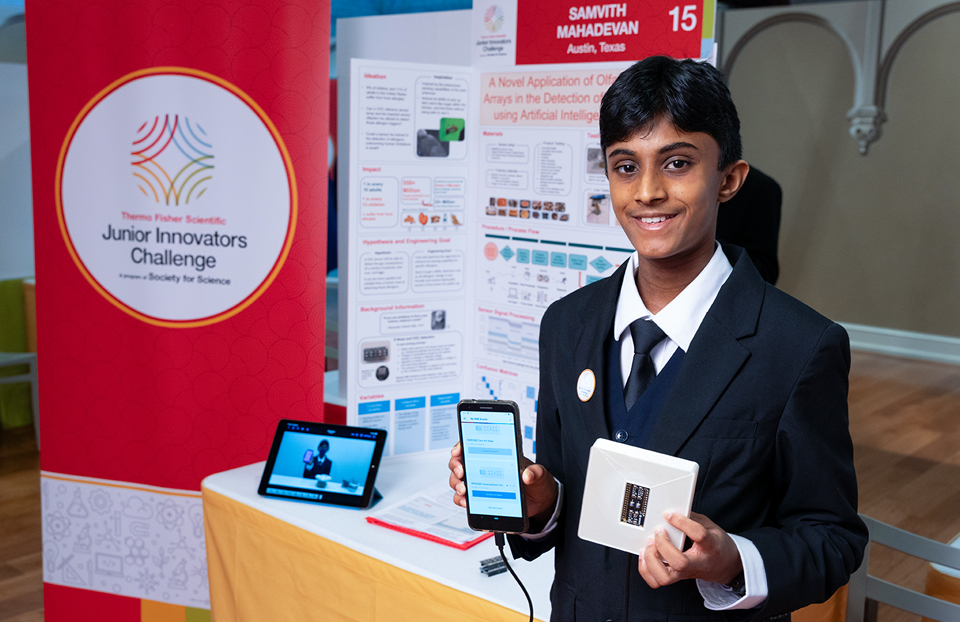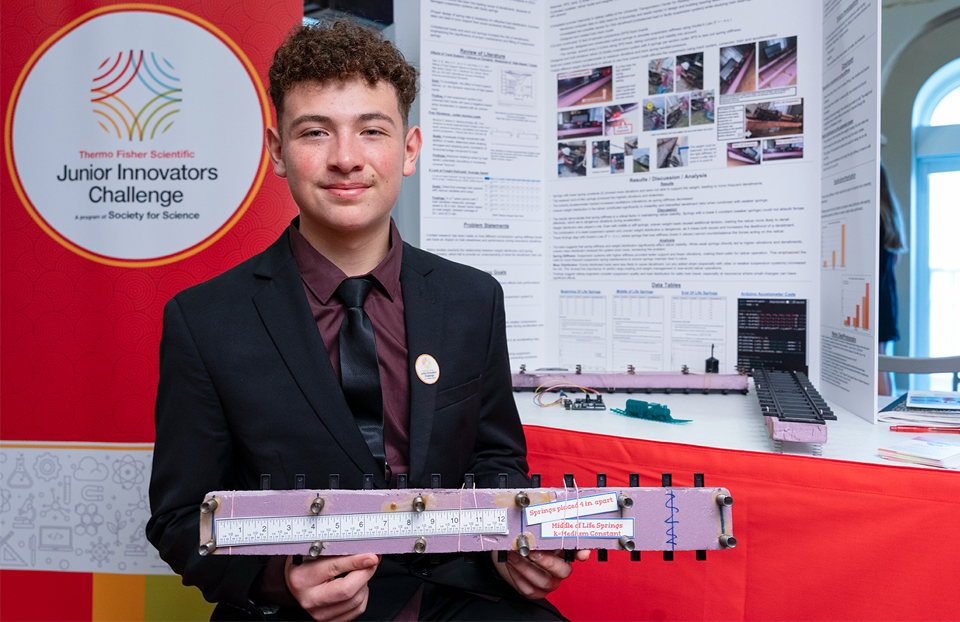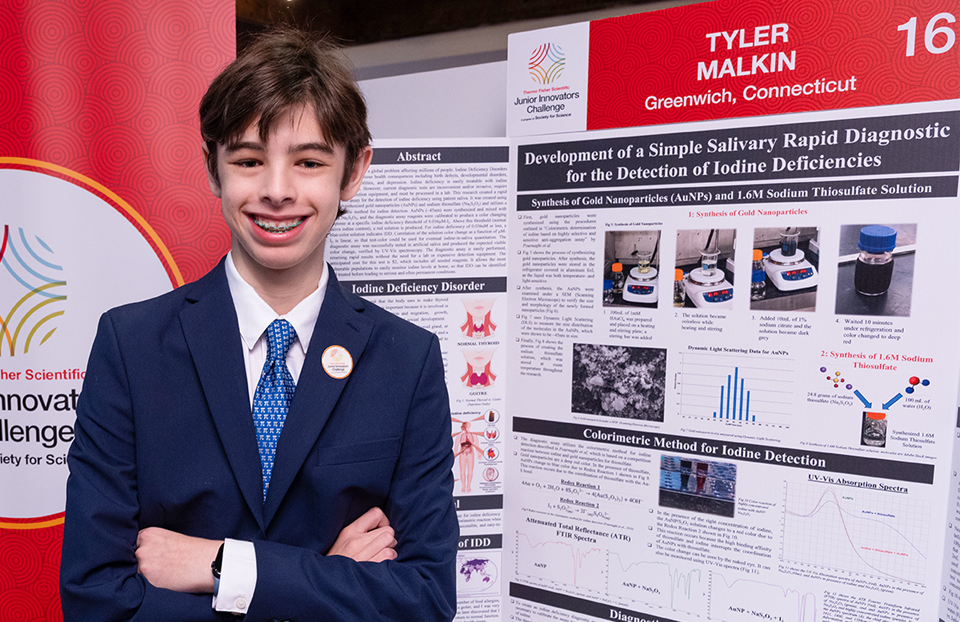Thermo Fisher JIC finalists build and code interactive minigolf courses at the KID Museum
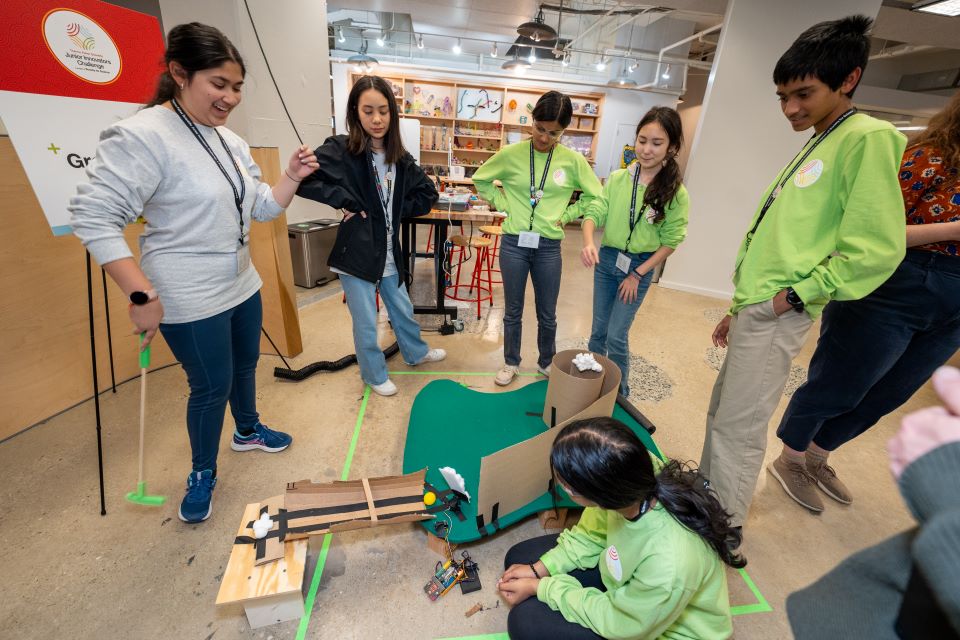
During the inaugural Thermo Fisher Scientific Junior Innovators Challenge, the top 30 finalists had the opportunity to compete in a variety of STEM challenges as six teams. During these challenges the finalists were observed by the judges to determine their critical thinking, collaboration, leadership and problem-solving skills through a series of unique projects.
During this year’s Thermo Fisher JIC finals week in Washington D.C., all six finalist teams hopped on a bus to make a short trip to the KID Museum in Bethesda, Maryland. There they engaged in the creative task of building one-hole miniature golf courses using cardboard engineering and Hummingbird.bit hardware and coding. This challenge tested the 30 finalists’ technical skills as well as their creativity and teamwork in the fun maker space curated by the amazing team of educators at the KID Museum. Before the designing and building process could begin, the museum’s educators guided everyone through some techniques for shaping cardboard. They also provided insights into utilizing the Hummingbird.bit hardware and coding to sense movements and create dynamic structures.
Finalists were given microbits attached to laptops with the Hummingbird.bit code on them to practice with, as well as an array of hardware to apply the coding to. LED lights, motion sensors and rotational and positional motors could all be programmed using the coding to create exciting movements which would then be applied to the miniature golf courses.
After practicing on a smaller scale, the teams were ready to tackle an interactive element for a one-hole miniature golf course. The challenge was to design a course wherein a ball launched from a small structure placed about a foot away from the course, would be met with interactive and dynamic elements created using the Hummingbird.bit coding and hardware which would either obstruct, assist or celebrate the golf ball’s journey to the hole.
The orange team tackled this problem by creating a colorful windmill which obstructed a player as they tried to reach the hole. The green team also created an obstacle, but this one sat at the junction where the bridge met the putting green and was followed by a swirling path leading eventually to the hole.
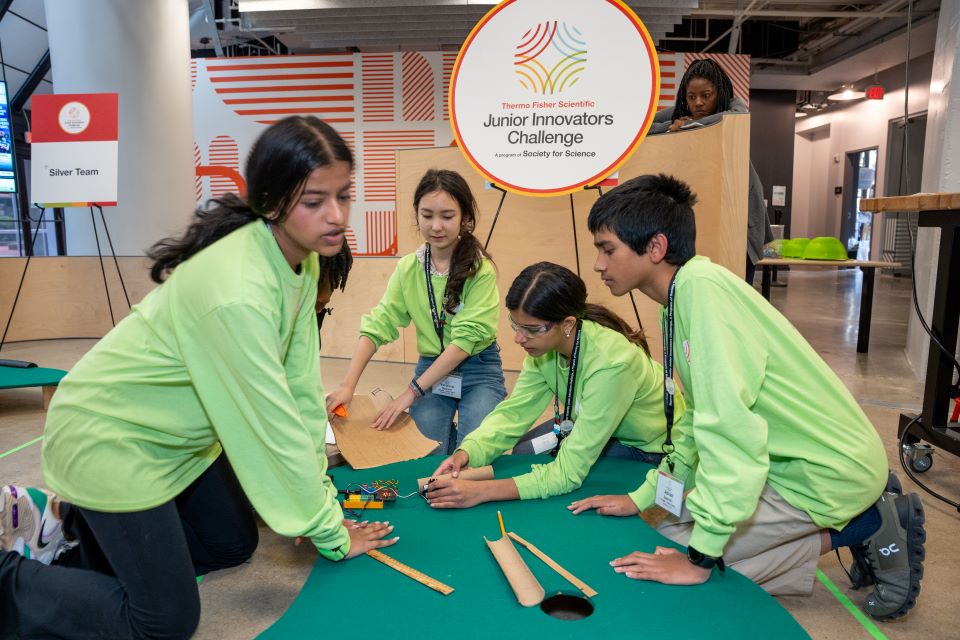
COURTESY OF LISA FRYKLUND/SOCIETY FOR SCIENCE
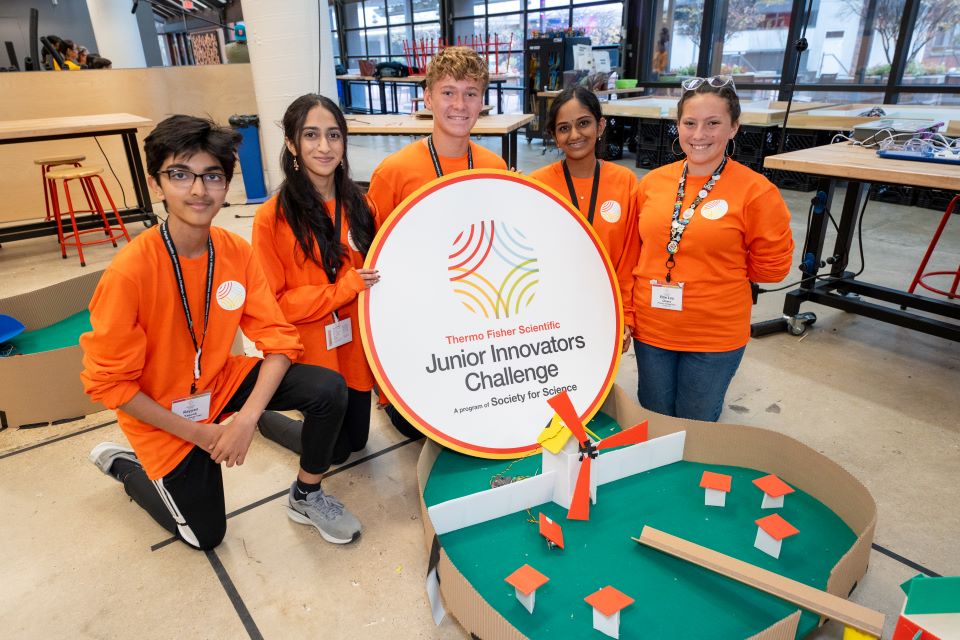
COURTESY OF LISA FRYKLUND/SOCIETY FOR SCIENCE
The silver team created a Halloween-themed hole with spooky objects moving in and out of the path of the golf ball, causing the player to need excellent timing to reach the hole decorated with a haunted house and LED lights to celebrate scoring. The purple team also used LED lights to celebrate putting the ball in the hole and created a dynamic challenge for their course by rotating half of a bridge to the hole, making the player need to time their hit just right to avoid falling through.
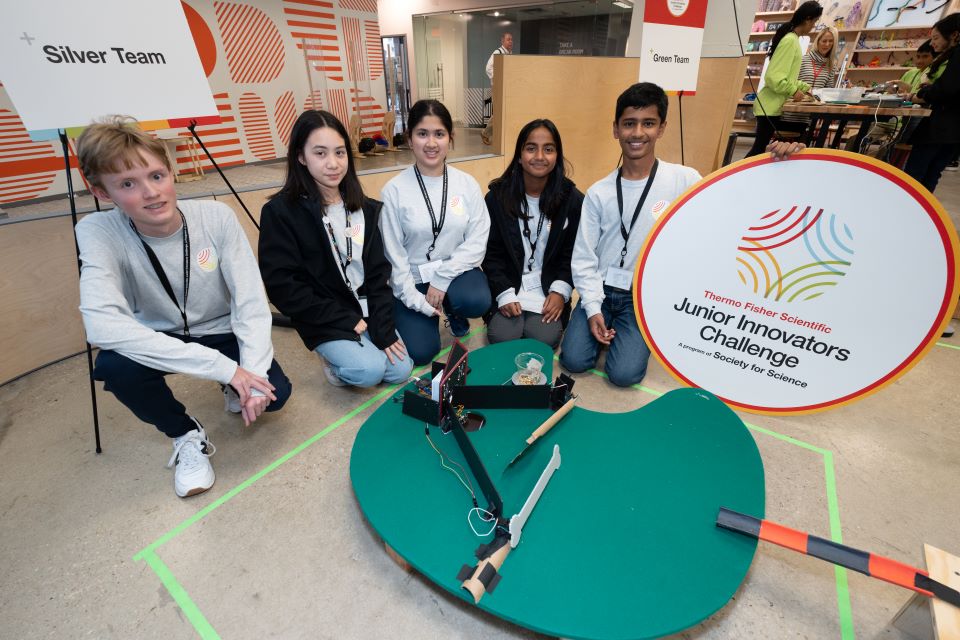
COURTESY OF LISA FRYKLUND/SOCIETY FOR SCIENCE
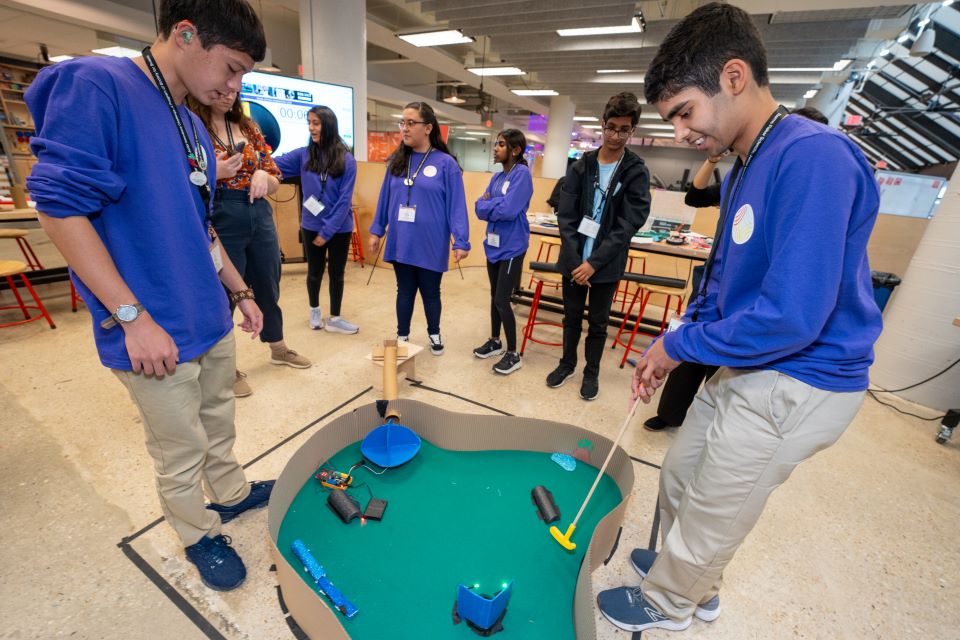
COURTESY OF LISA FRYKLUND/SOCIETY FOR SCIENCE
The blue team put a rotating obstacle in the way of accessing the course, but helped the players out by providing a backboard and a celebration of LED lights for when a player did manage to bypass the challenge. Finally, the gold team created a direct path for the ball to reach the hole which was obstructed by a rotating cardboard circle, making reaching the hole a game of chance and timing.
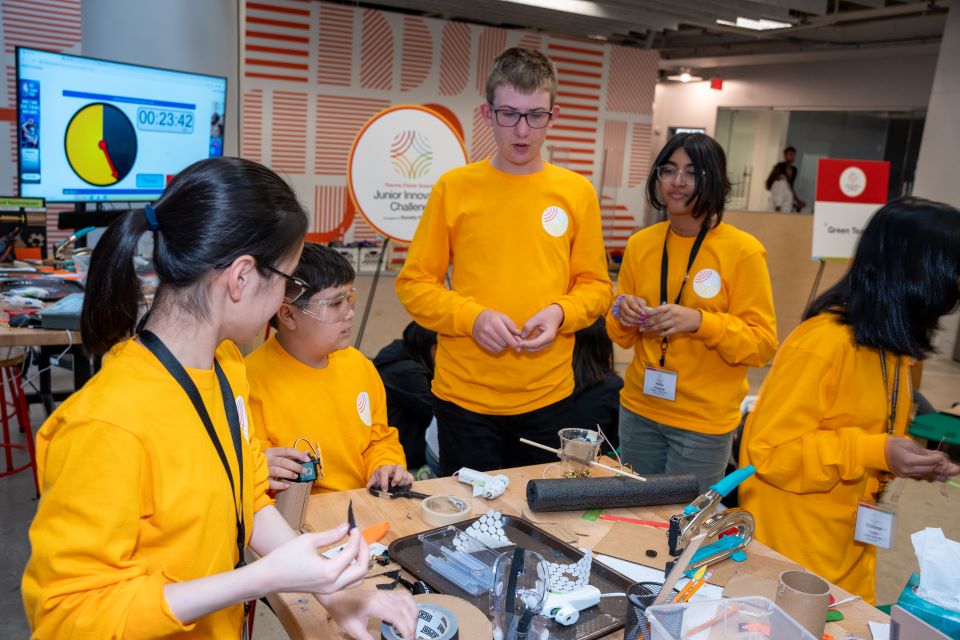
COURTESY OF LISA FRYKLUND/SOCIETY FOR SCIENCE
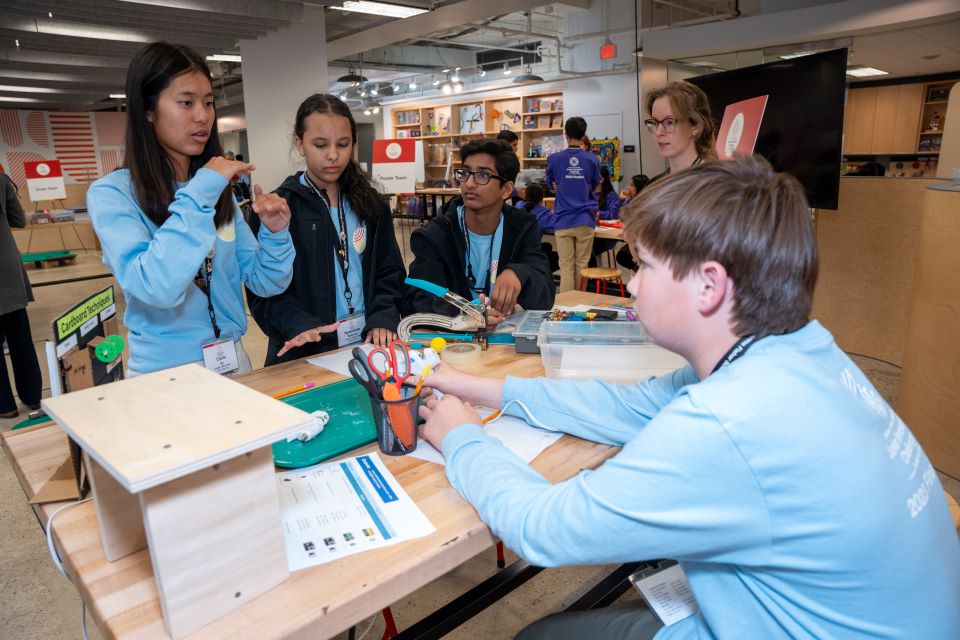
COURTESY OF LISE FRYKLUND/SOCIETY FOR SCIENCE
This challenge combined teamwork and creativity to come up with an initial design, work on building it together, and then pivoting when plans either didn’t work out or needed to be adjusted. All the finalists had the opportunity to experience an enjoyable fun maker space at the KID Museum. The teams explored how learning about a new technology could open the doors to creativity and play within the worlds of engineering and design. Thank you to the KID Museum for hosting us, and thank you to the fantastic educators – Reed Henkel, Sydney Lee, Will Ashley, Lezlie Silverstein and Kat Chung – who made this an afternoon full of learning and fun.
